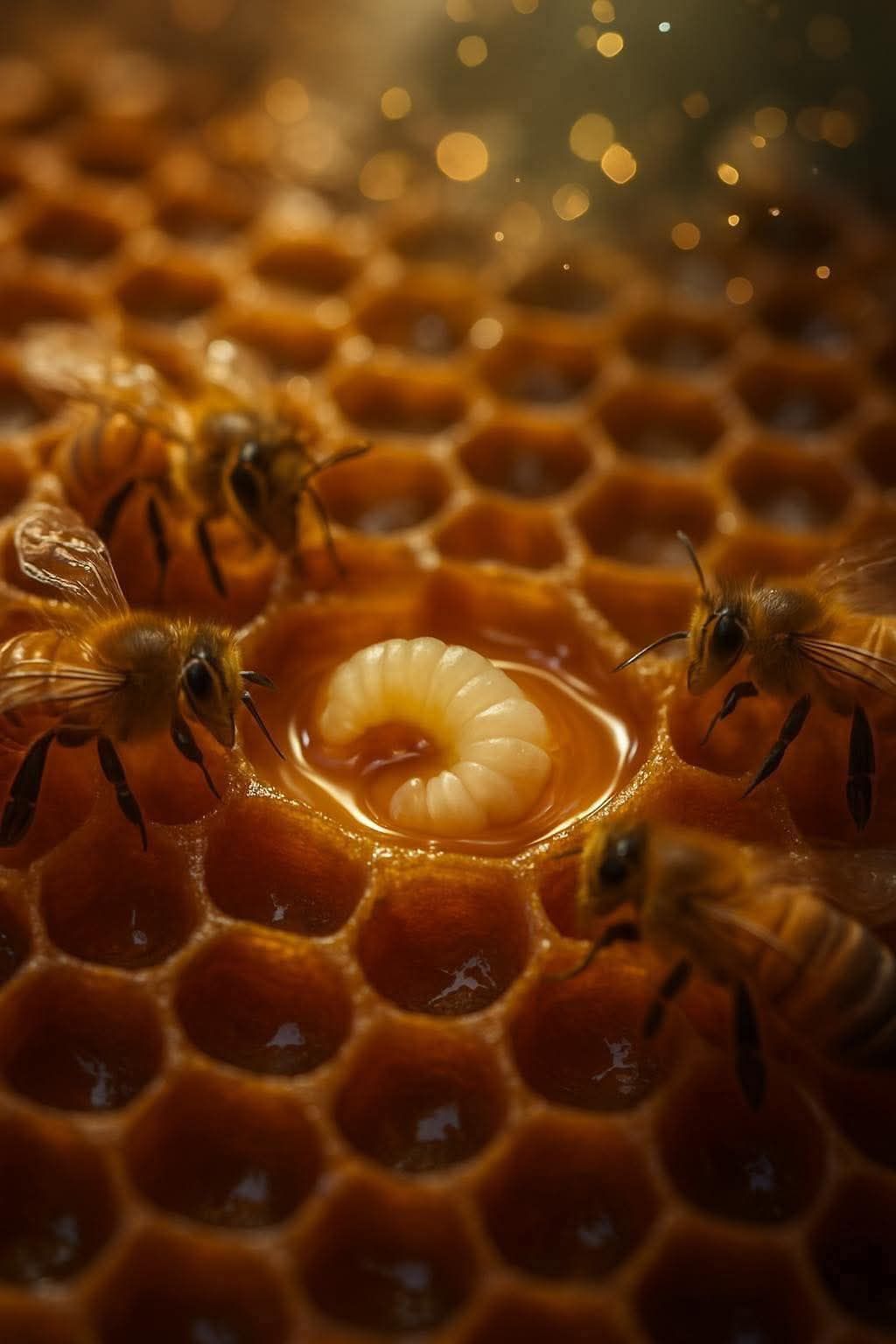Bees carry within them a remarkable, often overlooked, secret that offers us profound insights into leadership, transformation, and resilience. When a hive loses its queen, the one figure capable of sustaining the colony’s life and maintaining the order in its meticulously organized society, it seems that all hope is lost. The bees’ world begins to unravel. The pace of life in the hive slows, and without the queen’s ability to lay new eggs, the future of the colony is at risk. In just a few weeks, the colony could face extinction.
But surprisingly, the bees do not panic. They do not sit idly by, waiting for an external savior. Instead, they embark on a remarkable, almost unimaginable, emergency procedure, demonstrating the profound intelligence of the collective and their deep instincts, something that is hard to fathom in a world governed by insects.
The Transformation Begins with a Simple Yet Essential Choice
The worker bees, guided by their extraordinary instincts, begin an astonishing process. In the absence of the queen, they make a critical choice—one that seems so simple yet has profound implications. They select ordinary larvae—those that would have grown into regular worker bees, performing mundane tasks like collecting nectar, cleaning the hive, and caring for the young. These larvae were never meant to be special. They were not born with any genetic predisposition to become anything more than workers. But in a twist of fate, their destiny is completely altered.
These larvae are chosen to receive a rare, highly coveted food: royal jelly. Royal jelly is a nutritious substance, produced by worker bees, rich in proteins, vitamins, and bioactive compounds. It is, without question, a royal food in the truest sense. This nourishing jelly is not just a meal—it’s a life-changing elixir that will turn the tide for the hive. When these larvae are fed only royal jelly, their growth follows a completely different course. Over the course of a few days, their bodies develop in a way that is entirely different from the normal path of a worker bee.
The ovaries of the larvae become active. Their bodies grow larger, more powerful, and their lifespan increases exponentially—almost twenty times longer than that of the average worker. These once-ordinary larvae are no longer destined to serve. They are destined to rule. They will not perform menial tasks. They will give life to the colony. They will become the queen.
The Queen is Not Chosen Based on Her Genes. She is Created.
What makes this process even more fascinating is the fact that the worker bees and the queen share the same genetic code. This is not a case of genetic selection determining who becomes the queen. No, it is the nutrition, the care, and the decision of the hive that ultimately create the new queen. This is a truly profound concept: in the bee world, destiny is not determined by DNA, but by environment and nurturing.
In many ways, this is reminiscent of a human society where a child, who might otherwise live an ordinary life, is given the resources, attention, and care needed to develop extraordinary leadership skills. The key to greatness is not inherent in the individual’s genes but in the support and nurturing they receive. The power of leadership, it seems, is born from collective care and the choices made by others in critical moments. No genetic manipulation or external intervention is required. All that is needed is nourishment and support.
A Leader is Born from Crisis
The creation of the queen is more than just the transformation of a single larvae—it is a salvation for the entire colony. Once the new queen matures, she takes the leadership role within the hive. She begins to lay eggs, restoring the colony’s future and bringing order back to the hive. The sense of balance and organization is quickly reestablished as the hive goes through a rebirth.
Where there was once the threat of extinction, there is now a renewed strength, a stronger, more balanced, and more organized colony. The bees have weathered the crisis, and they emerge from it better and more resilient than before. This transformation is not just about survival; it is about thriving in the face of adversity. The colony doesn’t just rebuild itself—it becomes stronger.
The bees offer us an essential lesson in leadership and resilience: in times of crisis, despair is not the answer. Clarity, preparation, and the right choices are what matter. The bees, in their quiet wisdom, show us that during times of adversity, it is not the end that matters, but what comes after—how we respond.
In their world, a queen does not just emerge naturally. She is supported, fed, and guided into being. The bees offer us a profound and silent lesson: in times of difficulty, it’s not who you are at the start that matters, but what you receive from those around you, the care and support you get, and the decisions made during those trying moments.
Perhaps, just like in the hive, the most effective leaders are often the ones who arise not from sheer luck or circumstance, but from the crisis itself—from the vision of others and the transformation that follows.
What the Bees Can Teach Us About Leadership
The transformation of a single larvae into the queen is not just a miracle of nature; it is an inspiring story of leadership. The fact that this leadership arises from a crisis suggests that true leaders do not necessarily come from privileged positions or genetic advantages. Instead, leadership can emerge when the right conditions are in place—when support is given, when care is abundant, and when the environment is conducive to growth and change.
In a world where many believe that leaders are born, the bees show us that sometimes leaders are made—through careful nurturing, intentional support, and the clarity of purpose that comes during difficult times. The queen bee is not a product of her genes alone; she is the result of a carefully orchestrated process of care and purposeful nurturing.
Resilience in the Face of Crisis
What is even more remarkable about the bee colony’s story is its resilience. When the queen is lost, the colony is initially thrown into disarray. Yet, rather than succumbing to despair or chaos, the worker bees immediately respond with a clear and effective plan. They choose a new leader, and in doing so, they revive the future of the colony.
This story holds valuable lessons for us all. In times of hardship, there is no room for panic. In fact, crisis is often the birthplace of innovation and transformation. Just as the bees take action to preserve their future, we, too, can navigate through crises by focusing on what is needed to rebuild, reorganize, and emerge stronger.
Conclusion: The Leadership of the Bees
The life of the bee colony serves as a powerful metaphor for human societies. It teaches us that true leadership is not about inherited privilege or genetic advantage but about the nurturing environment that allows an individual to step into their fullest potential. When faced with adversity, the bees’ collective wisdom shines through: care, clarity, and purposeful action are what will guide us to survive and thrive.
In times of crisis, whether in the hive or in our own lives, we can take a lesson from the bees. A leader does not always emerge from the obvious source, but rather from the careful nurturing and choices made by others. Leadership is often created in response to adversity, not by chance, but by vision, care, and transformation.
Just as the bee colony finds a new queen, we, too, can rise to the challenges we face—stronger, wiser, and more resilient than before.





